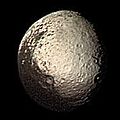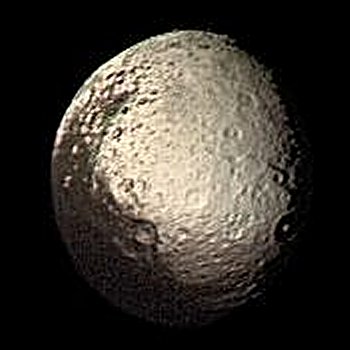Файл:Iapetus by Voyager 2 - enhanced.jpg
 Из Википедии, бесплатной энциклопедии
Из Википедии, бесплатной энциклопедии
Iapetus_by_Voyager_2_-_enhanced.jpg (350 × 350 пкс, размер файла: 19 Кб, MIME-тип: image/jpeg)
История файла
Нажмите на дату/время, чтобы посмотреть файл, который был загружен в тот момент.
| Дата/время | Миниатюра | Размеры | Участник | Примечание | |
|---|---|---|---|---|---|
| текущий | 17:29, 4 апреля 2005 |  | 350 × 350 (19 Кб) | Smartech~commonswiki | *'''Iapetus by Voyager 2 spacecraft, August 22, 1981''' *same as Iapetus_by_Voyager_2.jpg but focused on the mooon and feature-enhanced. *original image caption: Saturn's outermost large moon, Iapetus, has a bright, heavily cratered icy terrain and a da |
Использование файла
Следующие 3 страницы используют этот файл:
Глобальное использование файла
Данный файл используется в следующих вики:
- Использование в ar.wikipedia.org
- Использование в be-tarask.wikipedia.org
- Использование в be.wikipedia.org
- Использование в ca.wikipedia.org
- Использование в de.wikipedia.org
- Использование в el.wikipedia.org
- Использование в en.wikipedia.org
- Использование в eo.wikipedia.org
- Использование в es.wikipedia.org
- Использование в eu.wikipedia.org
- Использование в fr.wikipedia.org
- Использование в gl.wikipedia.org
- Использование в hr.wikipedia.org
- Использование в it.wikipedia.org
- Использование в ja.wikipedia.org
- Использование в ko.wikipedia.org
- Использование в la.wikipedia.org
- Использование в lb.wikipedia.org
- Использование в lt.wikipedia.org
- Использование в lv.wikipedia.org
- Использование в ms.wikipedia.org
- Использование в mwl.wikipedia.org
- Использование в no.wikipedia.org
- Использование в pl.wikipedia.org
Просмотреть глобальное использование этого файла.



